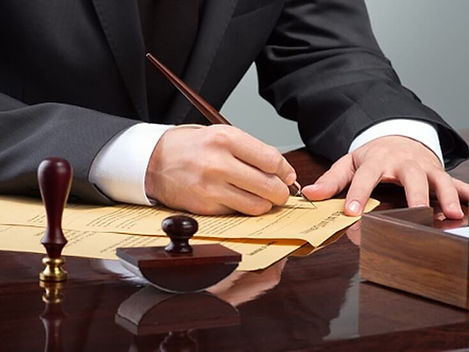In the vibrant realm of creativity, where authors and screenwriters breathe life into stories that captivate our hearts and minds, the Indian Copyright Act of 1957 stands tall as a fortress of protection. Within its pages lie the rights and provisions that safeguard the artistic endeavors of these imaginative souls, ensuring their works are respected, acknowledged, and rewarded. As the legal labyrinth of copyright law can be overwhelming, this article aims to serve as a guiding light—a compass that navigates the complexities, providing a concise summary of the Act’s key provisions. While it is essential to seek legal counsel for practical purposes, let us embark on this educational journey to gain a valuable understanding of the Copyright Act and its significance for authors and screenwriters.

1) Subject matter of Copyright: Creator and creation: Who is an Author?
a) 2 (d) (i): for the literary or dramatic work-the author of the work
b) about a cinematograph film or sound recording- the producer
2) Work Section 2 (z) read with Section 13
a) “Work” means any of the following works, namely: — (i) a literary, dramatic, musical, or artistic work; (ii) a cinematograph film; (iii) a sound recording;
b) No copyright in infringed work
c) 13 (4) Copyright in a cinematograph film or a sound recording shall not affect the separate copyright in any work in respect of which or a substantial part of which, the film.
3) What does copyright provide you? Section 14 tells us;
Copyright is an exclusive right subject to do or authorize to do; (i) to reproduce the work (ii) to issue copies of the work (iii) Communicate to the public (iv) to make any cinematograph film or sound recording (v) translation (vi) adaptation
4) Who is the first owner? The Section-17 tells us;
i) literary, dramatic, or artistic work under a contract of service/Employment Contract – Employer is the first owner
ii) photograph taken, or a painting or portrait drawn, or an engraving or a cinematograph film made- the person paying consideration is the owner
iii) in the case of a work made in the course of the author’s employment under a contract of service or apprenticeship, to which clause (a) or clause (b) does not apply, the employer shall, in the absence of any agreement to the contrary, be the first owner of the copyright therein.
5) Assignment of copyright Read Section-18 & Section 19;
a) Owner can assign
b) No right to assign or waive the right to receive royalties
c) No assignment without a written instrument
d) No period mentioned- 5 years by default
e) No territory mentioned- India by default
f) Licences by owners of copyright- Section 30 governs
6) Revocation of Assignment. Check out Section-19 A
Appellate Board can revoke an assignment if the assignee fails to make sufficient exercise of the rights assigned to him, and such failure is not attributable to any act or omission of the assignor.
7) How long a copyright exists on a work? Read Section 23 of the Act.
Literary, dramatic, musical, or artistic work- Lifetime & until sixty years from the beginning of the calendar year next following the year in which the author dies.
In the case of a cinematograph film, copyright shall subsist until sixty years from the beginning of the calendar year next following the year in which the film is published.
8) Brief About Copyright Society: Section-33
i) A copyright society is a non-governmental body created for collective bargaining under copyright law that licenses copyrighted works on behalf of the authors and engages in collective rights management and collection of royalties.
ii) In India there cannot be a copyright society under private contract
iii) Administration, tariff publication, control ratio, returns and reports, etc. of a copyright Society are governed as per Act
9) Registration of Copyright
i) Section 44 to 50A
ii) Discretionary/optional
iii) Copyright Office
10) Copyright Infringement
i) Section-51: Unauthorised use
ii) Section 52- Fair Use- Private use (Research), criticism or review, reporting, teaching, private performance, etc. (Nothing outside 52 can be counted as fair use in India).
11) Remedies (Civil)
i) Only an owner & exclusive licensee can exercise
ii) injunction, damages, accounts (Section-55)
12) Moral Rights: Section 52
i) Right to paternity & dignity
ii) Failure to display a work or to display it to the satisfaction of the author shall not be deemed to be an infringement of the rights conferred by this section.
13) Remedies (Criminal)
i) a person who knowingly infringes or abets the infringement
ii) shall be punishable with imprisonment- minimum six months extensible to three years & fine of a minimum of fifty thousand rupees extensible to two lakh rupees only.
iii) The complainant may pursue criminal charges against the infringer in addition to a civil suit
As we conclude our exploration of the Copyright Act of 1957 and its relevance for authors and screenwriters, it becomes evident that this legal framework stands as a vital pillar of protection in the creative realm. While this summary has shed light on its key provisions, it is essential to remember that the intricacies of copyright law extend beyond these words. Seeking legal consultation is imperative when faced with real-life scenarios and intellectual property matters. As authors and screenwriters continue to shape our literary and cinematic landscapes, let us recognize the significance of copyright law in upholding their rights, fostering creativity, and ensuring that the power of imagination remains safeguarded for generations to come.
For any legal consultation, feel free to write to attorneyforcreators@gmail.com.






